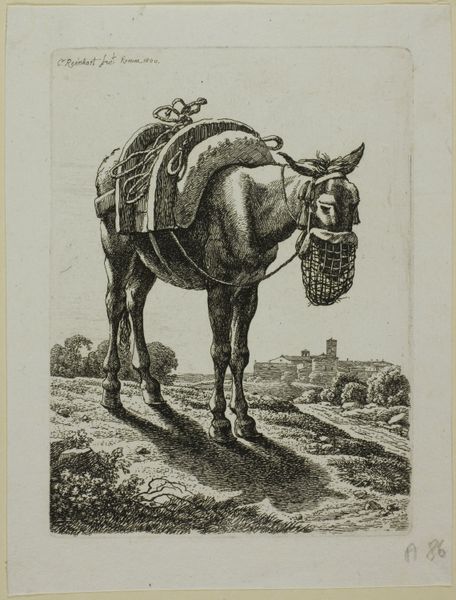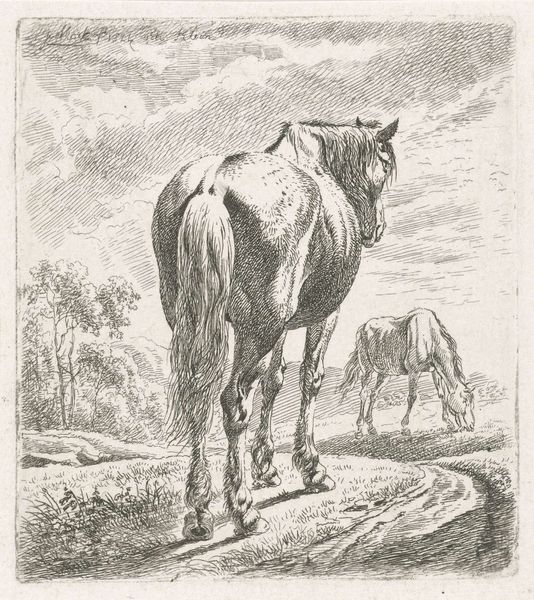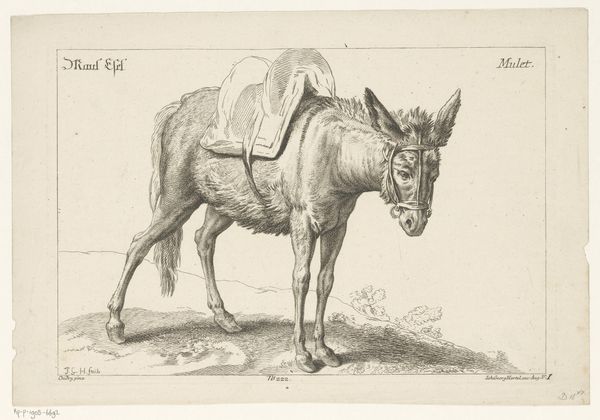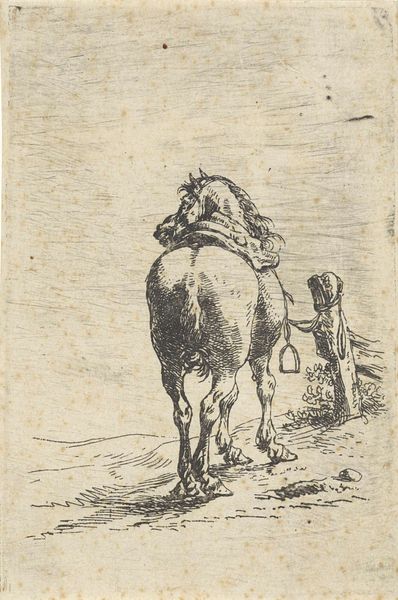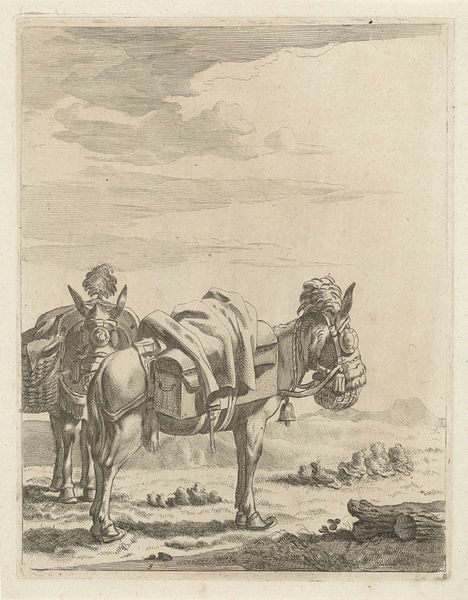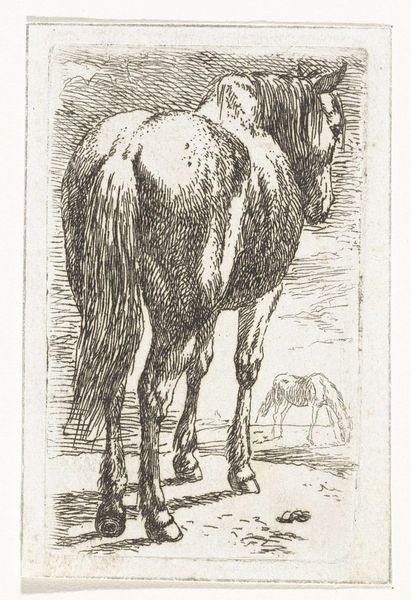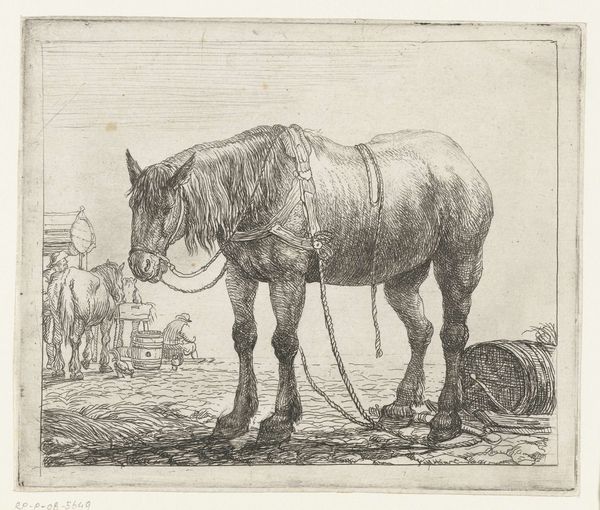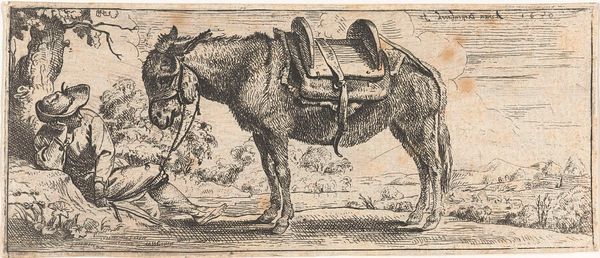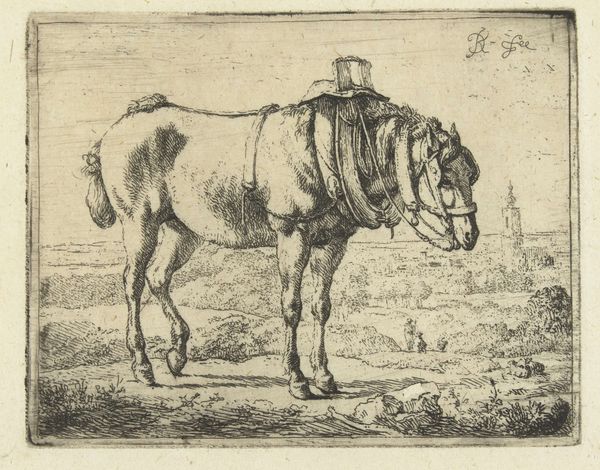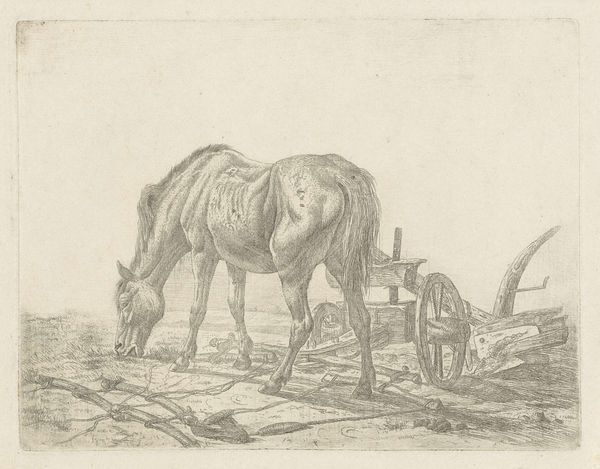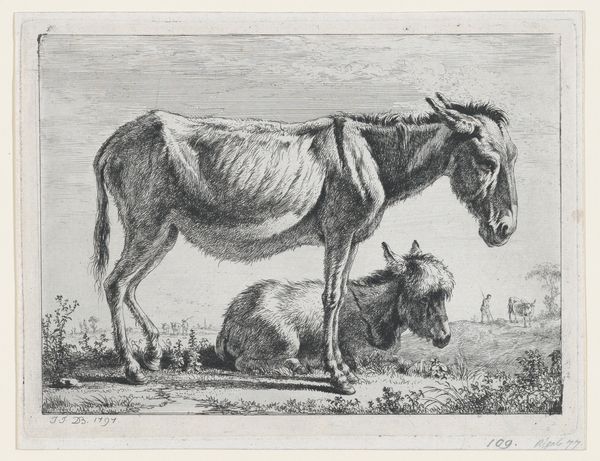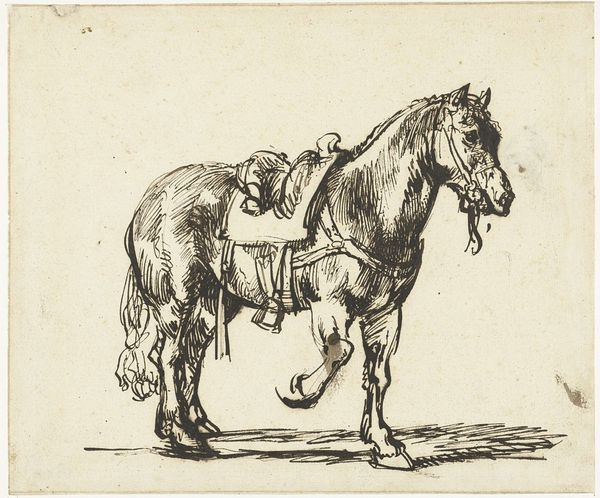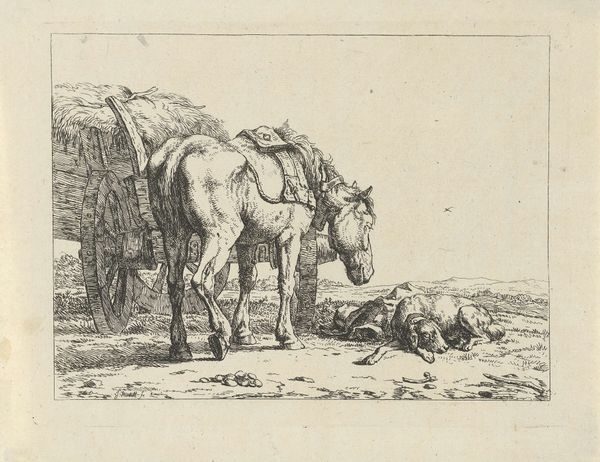
Feeding Mule - Rear, from Die Zweite Thierfolge 1800
0:00
0:00
drawing, print, etching, paper
#
pencil drawn
#
drawing
# print
#
etching
#
landscape
#
paper
#
pencil drawing
#
history-painting
Dimensions: 144 × 108 mm (plate); 169 × 134 mm (sheet)
Copyright: Public Domain
Curator: At first glance, this little etching just looks like a humble beast of burden trudging along. I'm curious to see what its story might be... Editor: "Feeding Mule - Rear," created around 1800 by Johann Christian Reinhart. It’s currently held in the collection of the Art Institute of Chicago. Look closer; beyond the animal, there are sweeping sociopolitical undertones. Curator: Reinhart's signature "Rome 1800" really sets the stage, doesn't it? It feels so… old. This poor thing, seen from the rear, is loaded down with what appears to be travel gear or wares in the basket. He looks completely burdened and yet... there is almost a rustic kind of beauty to the etching. Editor: It speaks volumes about labor, class, and even empire, doesn't it? The landscape—almost a romantic backdrop—ironically throws the animal's weary posture into sharp relief. One can’t help but question: who profits from the beast’s labor, and what systems perpetuate that arrangement? Curator: Right, exactly. The composition guides our eye right up its hindquarters! Talk about subjugation. But did the artist choose the perspective to express some deeper sympathy for working animals, perhaps, in that Neoclassical age of grand human narratives? Editor: Possibly, though it is necessary to interrogate whose perspectives history amplifies and whose labor it exploits. History paintings were extremely popular in the late eighteenth century, reflecting revolutionary interests; however, one can apply that same perspective when considering animal labor within that era, understanding how animals may also be pawns or causalities of revolution and historical progression. Curator: I guess what I find interesting is this intersection of animal and setting: Reinhart positions the mule and that simple cart against a complex, historic vista. It begs for a more contemporary consideration beyond labor economics to ponder on our relation to nature itself, no? Editor: Absolutely! These representations aren’t merely aesthetic—they actively shape our understanding. They provide insight into our societal structures, then and now, urging a more critical engagement with the treatment of laborers, the impact of capitalist exploitation on animals and landscapes, as well as whose voices dominate visual discourses. Curator: You are right. The quiet endurance of this unassuming beast reverberates into louder, far more complex and meaningful dialogues. Thank you! Editor: And thank you! It's a crucial reminder of how deeply history shapes our present, as well as what stories and realities sometimes go unheard, or unseen, within common settings.
Comments
No comments
Be the first to comment and join the conversation on the ultimate creative platform.
